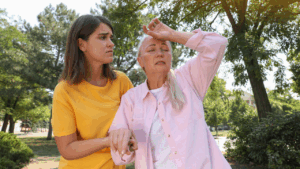Understanding Overdose: Signs, Symptoms, and Prevention
Every year, August 31st stands as a beacon for communities worldwide, marking International Overdose Awareness Day. It’s a day filled with mixed emotions — remembrance, sorrow, solidarity, and hope. But more than anything, it’s a call for understanding. It beckons us to delve deeper into the complex world of overdoses, why they occur, how to recognize them, and ways to prevent them. Within this intricate tapestry, there’s an undeniable thread connecting overdose to mental health. In this article, we aim to shed light on these intertwined issues, especially in the Canadian context.
Understanding Overdose
Recognizing the Signs
Breathing Changes
One of the most immediately alarming signs of a potential overdose is a change in breathing patterns. Breathing may become labored or shallow, marked by shorter, more rapid breaths. In more severe cases, an individual might stop breathing altogether. This is especially common in opioid overdoses, where the drug can depress the respiratory system. A lack of oxygen can result in brain damage or death in just a few minutes, making swift action crucial.Skin Alterations
Skin can offer a visual cue to internal distress. A bluish tint, particularly noticeable on the lips, fingertips, or under the nails, suggests that the body is not receiving adequate oxygen. This cyanotic condition arises when the blood carries an insufficient amount of oxygen. On the other end of the spectrum, some overdoses can cause flushed or hot skin, indicating an elevated body temperature or potential reactions to toxins in the system.Pupil Anomalies
The eyes can also hint at potential overdose. Opioids, for instance, often cause pupils to constrict dramatically, reducing them to the size of pinpoints. Conversely, stimulants or hallucinogens might result in dilated pupils, making them appear much larger than normal. Monitoring any drastic change in pupil size can be essential in identifying the type of substance involved.State of Consciousness
The brain’s response to toxic levels of a substance can be varied. Profound drowsiness, confusion, or delirium might be evident, suggesting the central nervous system is being affected. In more serious instances, an individual may become unresponsive or may even fall into a coma. Any sudden or uncharacteristic change in a person’s level of alertness or responsiveness is cause for immediate concern.Heart Rate Variations
Just as with breathing, the heart can also exhibit signs of distress during an overdose. Some substances, like stimulants, can cause tachycardia — an abnormally rapid heartbeat. This can be accompanied by palpitations, where the individual feels their heart is pounding or fluttering. In contrast, depressants might lead to bradycardia, or a dangerously slow heart rate. Monitoring pulse irregularities can be a key determinant in assessing the severity of an overdose and guiding subsequent interventions.Prevention Strategies
Education
Being aware of the potential side effects, interactions, and overdose symptoms of any medication or substance one consumes is crucial. This includes prescribed medications, over-the-counter drugs, and recreational substances.Safe Storage
Beyond the reach of children, medications should be stored in locations where there’s no risk of accidental ingestion or intentional misuse.Naloxone Access
In recent years, Canada has seen a surge in opioid-related overdoses. Naloxone can reverse an opioid overdose within minutes. Familiarity with its administration is becoming as fundamental as CPR knowledge.Open Dialogue
Transparency with healthcare providers about all substances consumed — legal, illegal, prescribed, or recreational — ensures a more informed approach to one’s health.The Mental Health Connection
Addressing mental health includes building a supportive environment, fostering open conversations, and equipping individuals with coping mechanisms that don’t rely on substance misuse. If you or someone you know is struggling, seeking help from a mental health professional can make a real difference. You can find qualified therapists near you by searching on medimap.ca.



